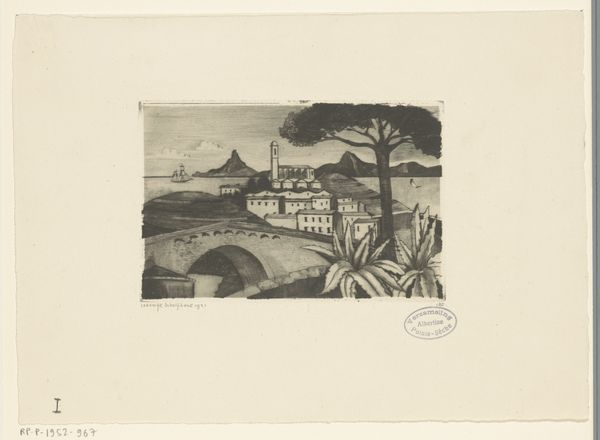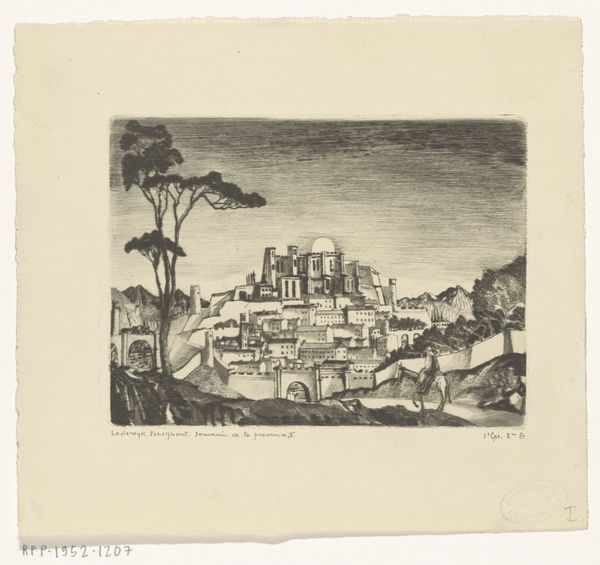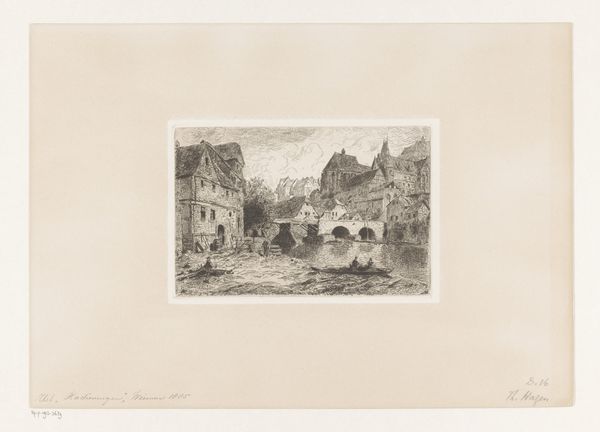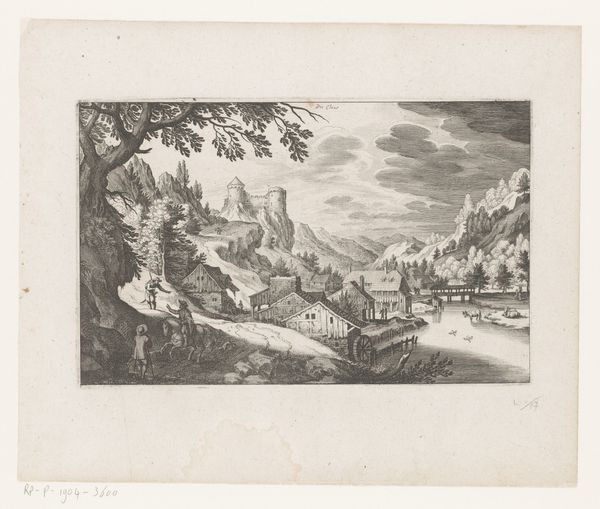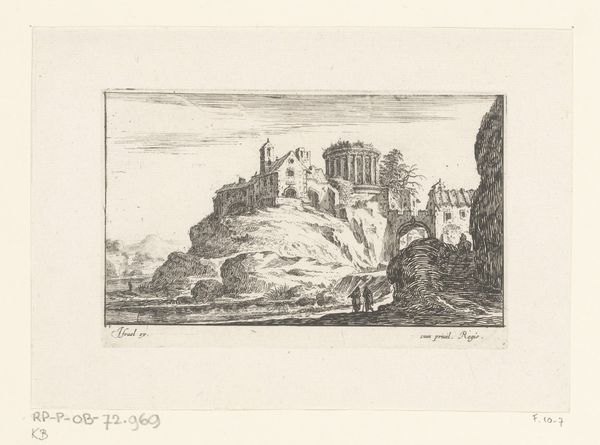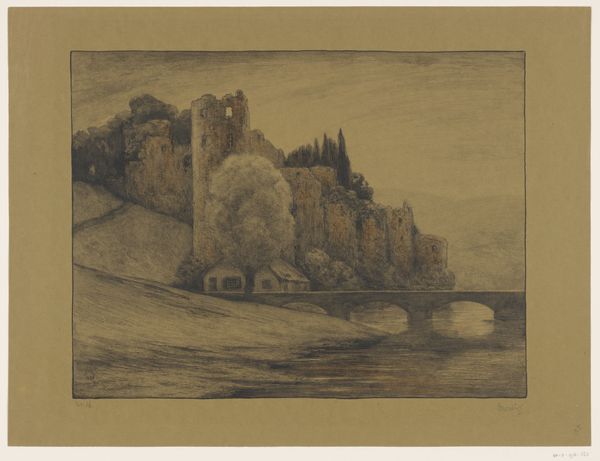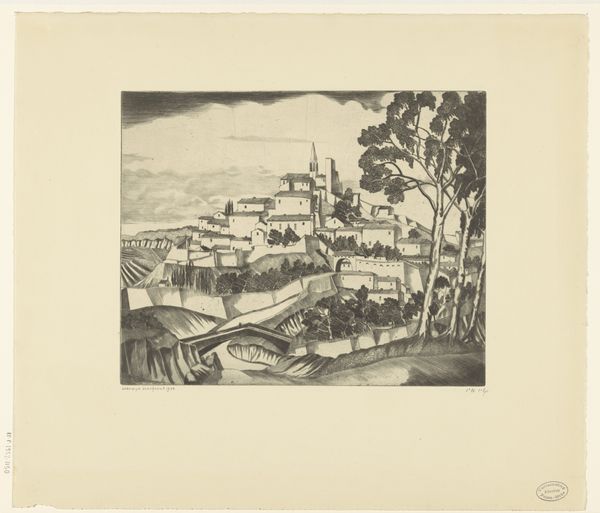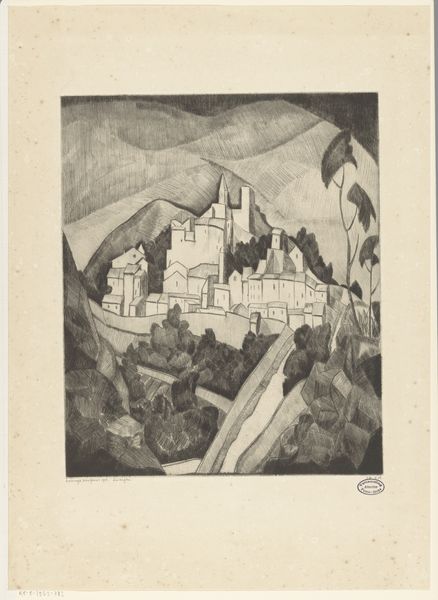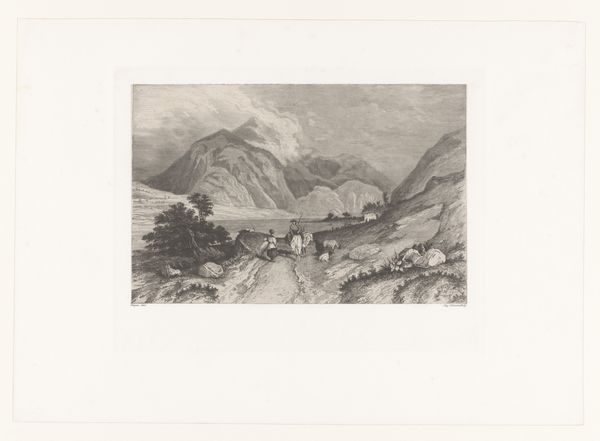
print, etching
# print
#
etching
#
landscape
#
cityscape
#
realism
Dimensions: height 148 mm, width 188 mm
Copyright: Rijks Museum: Open Domain
Curator: This is Lodewijk Schelfhout's "Corte I", an etching created sometime between 1920 and 1926. You can find it here at the Rijksmuseum. What are your initial thoughts on this cityscape, Editor? Editor: The imposing silhouette of that mountain is instantly striking. It looms over the town like a silent guardian, or perhaps, something a little more ominous? The high-contrast chiaroscuro definitely creates a dramatic atmosphere. Curator: That sense of drama could well be tied to the social climate of the era. After the First World War, many artists were exploring themes of isolation, and the relationship between humanity and a sometimes overpowering nature. Do you see that here? Editor: Absolutely, though the bridge in the foreground is interesting, almost hopeful. Bridges are always potent symbols aren't they? Connection and transition and here it invites us to cross, venture deeper into the scene despite the mountain's potentially overwhelming presence. Curator: Precisely. Bridges in art are often tied to progress and modernity. Etching as a printmaking technique too was seeing increasing popularity in the early 20th century, finding favour among artists wishing to explore such themes. It made art more widely available, and brought it into the domestic sphere, a more democratic offering. Editor: Yes and looking closely, I see so many textures within those tonal shifts of the landscape. Light bounces off the white buildings in the town and the overall effect evokes the visual vocabulary of certain dreamscapes that, say, Chirico was exploring, and so on, but without the same overtly surreal tone. Curator: A valuable point. Schelfhout’s style often shows his focus on representing recognisable realities with minimal romantic flourish, more concerned with social realism perhaps than subjective experience. You can trace Dutch printmaking history into Schelfhout's style and that focus is very typical of many artist groups. Editor: So it does balance those ideas then, doesn't it? The harsh reality and dreamlike imagery. It creates an internal push and pull that resonates beyond the immediate visual representation. It's something about cultural memory; mountains hold centuries of meaning for us. Curator: Agreed, "Corte I" provides a compelling look at the complexities of landscape within evolving artistic styles of its period, even touching on national and broader cultural sensitivities of the interwar period. Editor: A quiet commentary rendered powerfully through sharp lines and deep shadows, leaving you contemplating not just the scene, but its undercurrents too.
Comments
No comments
Be the first to comment and join the conversation on the ultimate creative platform.

